
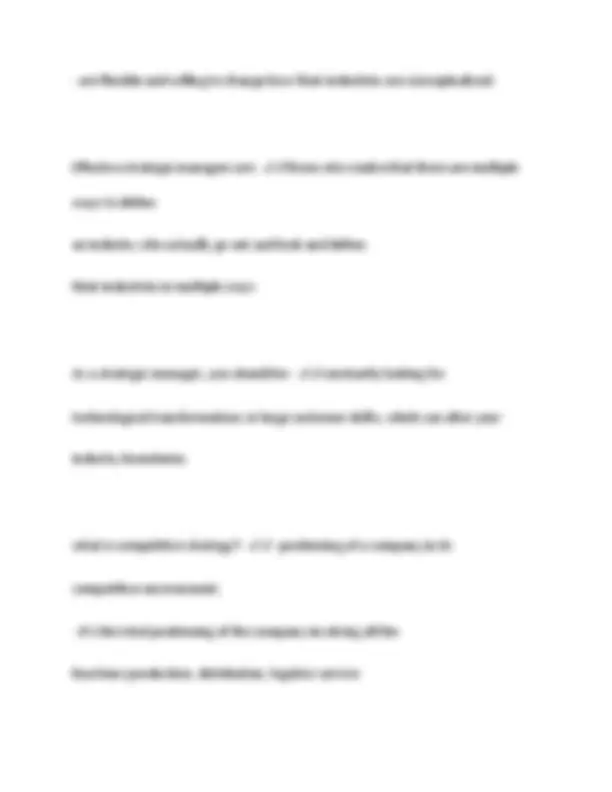
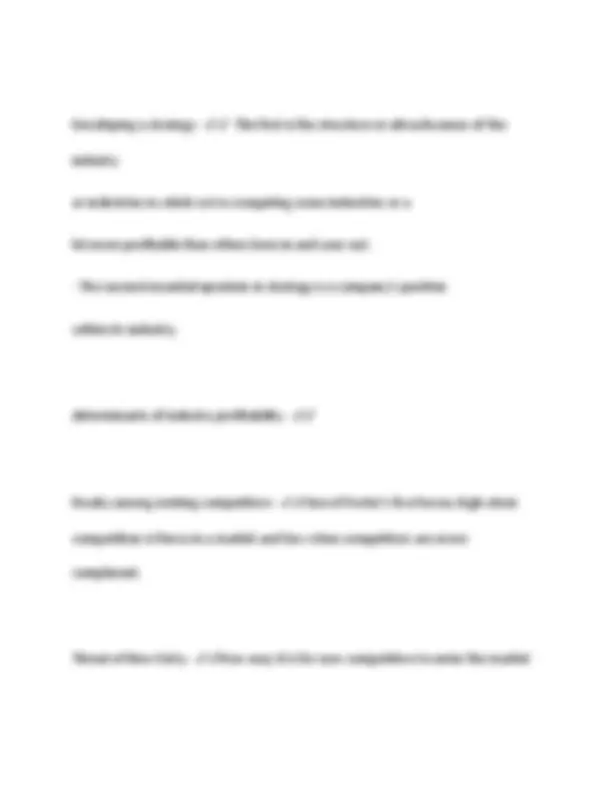
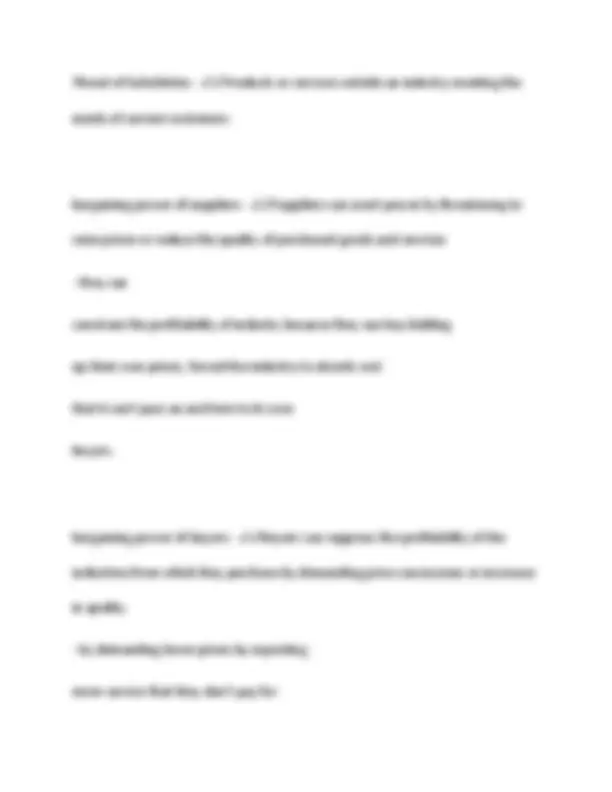
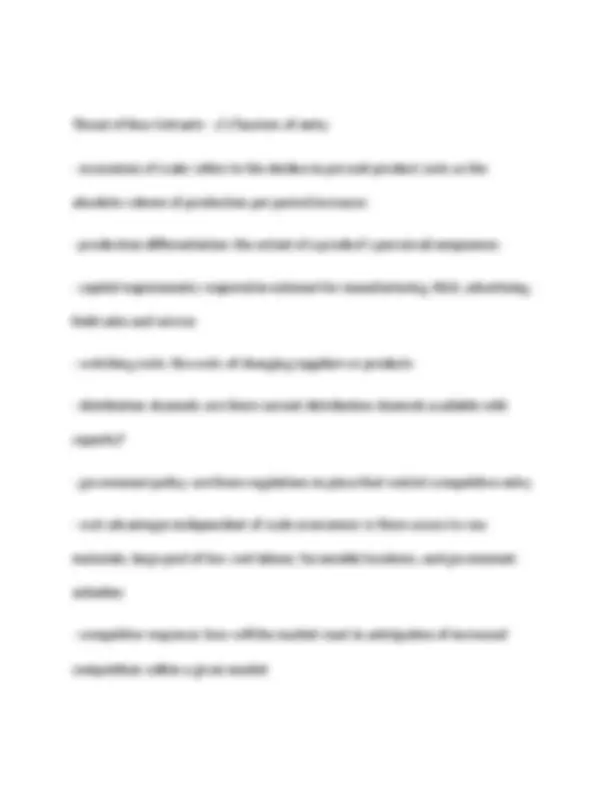
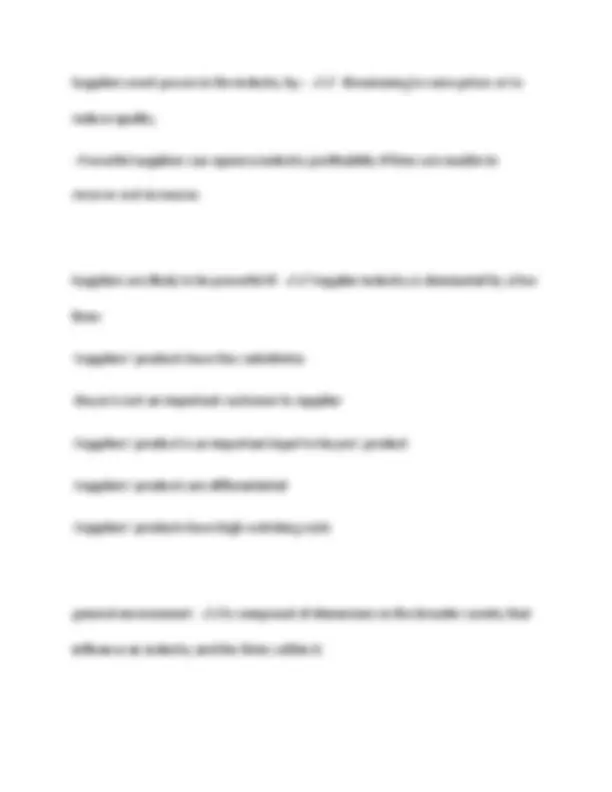
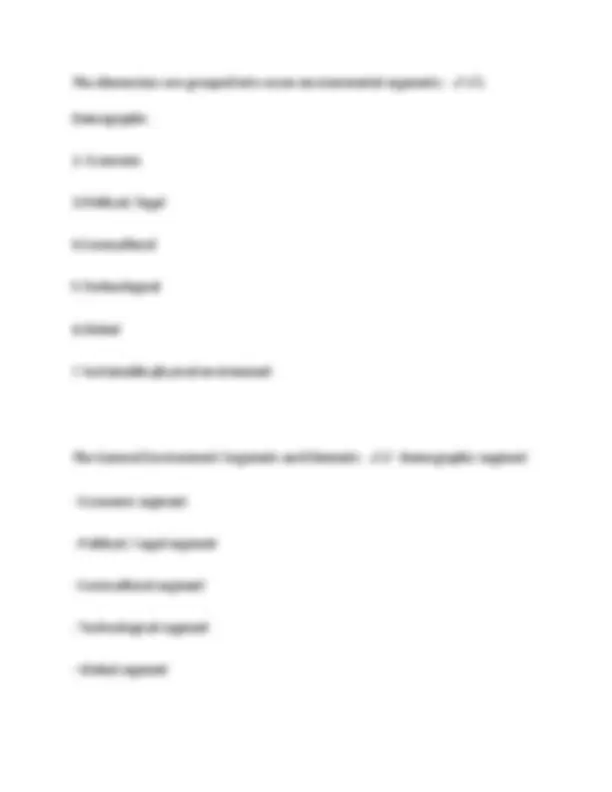
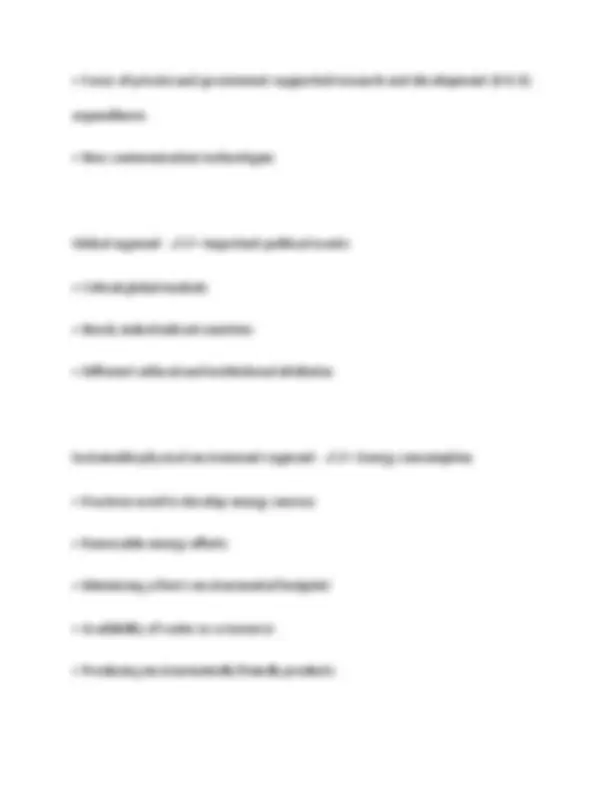
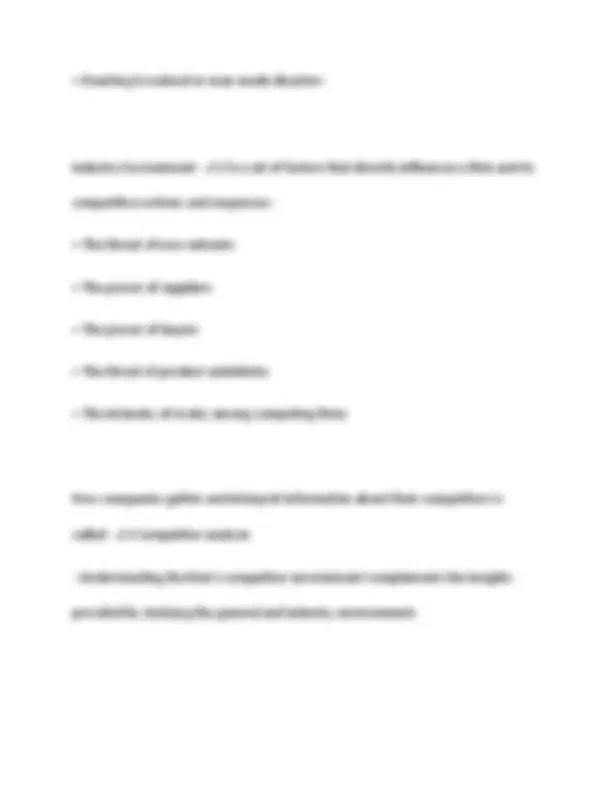
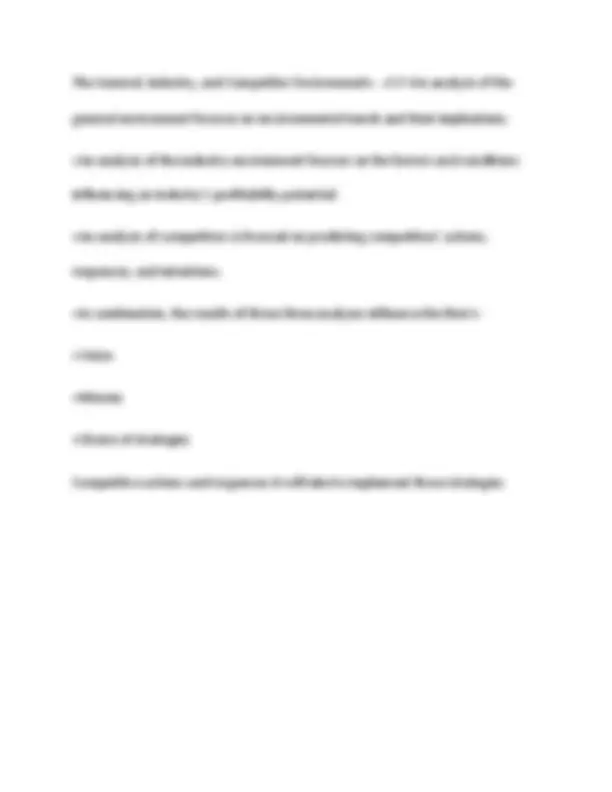


Study with the several resources on Docsity

Earn points by helping other students or get them with a premium plan


Prepare for your exams
Study with the several resources on Docsity

Earn points to download
Earn points by helping other students or get them with a premium plan
Community
Ask the community for help and clear up your study doubts
Discover the best universities in your country according to Docsity users
Free resources
Download our free guides on studying techniques, anxiety management strategies, and thesis advice from Docsity tutors
A collection of questions and answers related to sevi 3013 strategic management. It covers key concepts such as industry analysis, competitive strategy, porter's five forces model, and the general environment. Useful for students seeking to understand and review these concepts.
Typology: Exams
1 / 15

This page cannot be seen from the preview
Don't miss anything!










who you define as your competition also depends on - ✔✔your industry boundary What is an Industry? - ✔✔- Set of firms that produce similar products.
together through traditional telephone links. They also see themselves as providing entertainment. why is an industry boundary so informed? - ✔✔how an industry boundary can make a difference to how strategic manager illustrated by Theodore Live it. In this classical marketing article called Marketing My Opium, he talked about the fact he focused on the railroad industry in the 19 twenties and thirties in the United States, the preeminent industry in the in America, extremely successful people making millions and billions of dollar strategic managers and industry boundaries Effective strategic managers:- - ✔✔- work with multiple definitions during environmental and competitor analysis.
Developing a strategy - ✔✔- The first is the structure or attractiveness of the industry or industries in which we're competing some industries or a lot more profitable than others here in and year out.
Threat of Substitutes - ✔✔Products or services outside an industry meeting the needs of current customers bargaining power of suppliers - ✔✔Suppliers can exert power by threatening to raise prices or reduce the quality of purchased goods and services
Porter's Five Forces Model of Competition - ✔✔This model determines the future and current profitability of the industry Porters 5 Forces Model - ✔✔- Five forces shape industry structure.
Threat of New Entrants - ✔✔barriers of entry
The dimensions are grouped into seven environmental segments: - ✔✔1. Demographic